Vu Duc Thang returned to his native village. He was one of the first and rare Bat Trang Village sons to pursue a new path in life successfully. Thang enrolled in the Faculty of Graphics at the Hanoi College of Industrial Fine Arts, the current Hanoi University of Industrial Fine predecessor. Thang’s objective was to improve Bat Trang ceramic products’ artistic and commercial value while keeping abreast with the cultural changes in the public’s perception and artistic penchants.
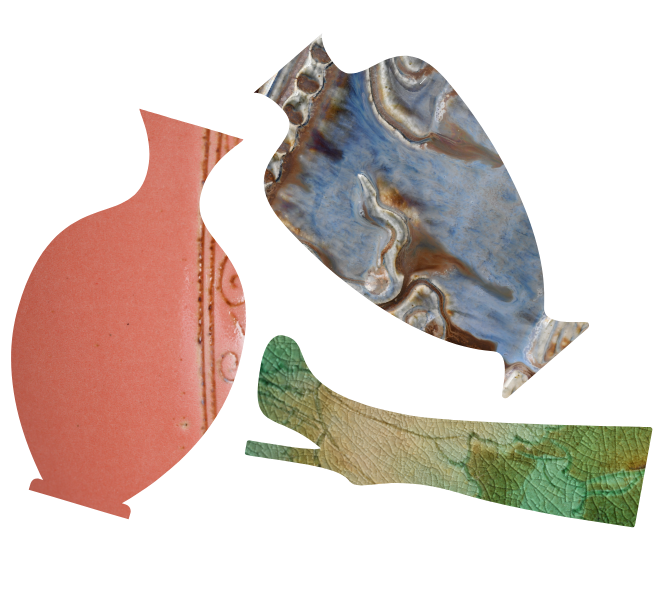
However, initiating change in a traditional craft village is not an easy task, particularly in the final decade of the 20th century, which saw a transitional period for the market’s economy.
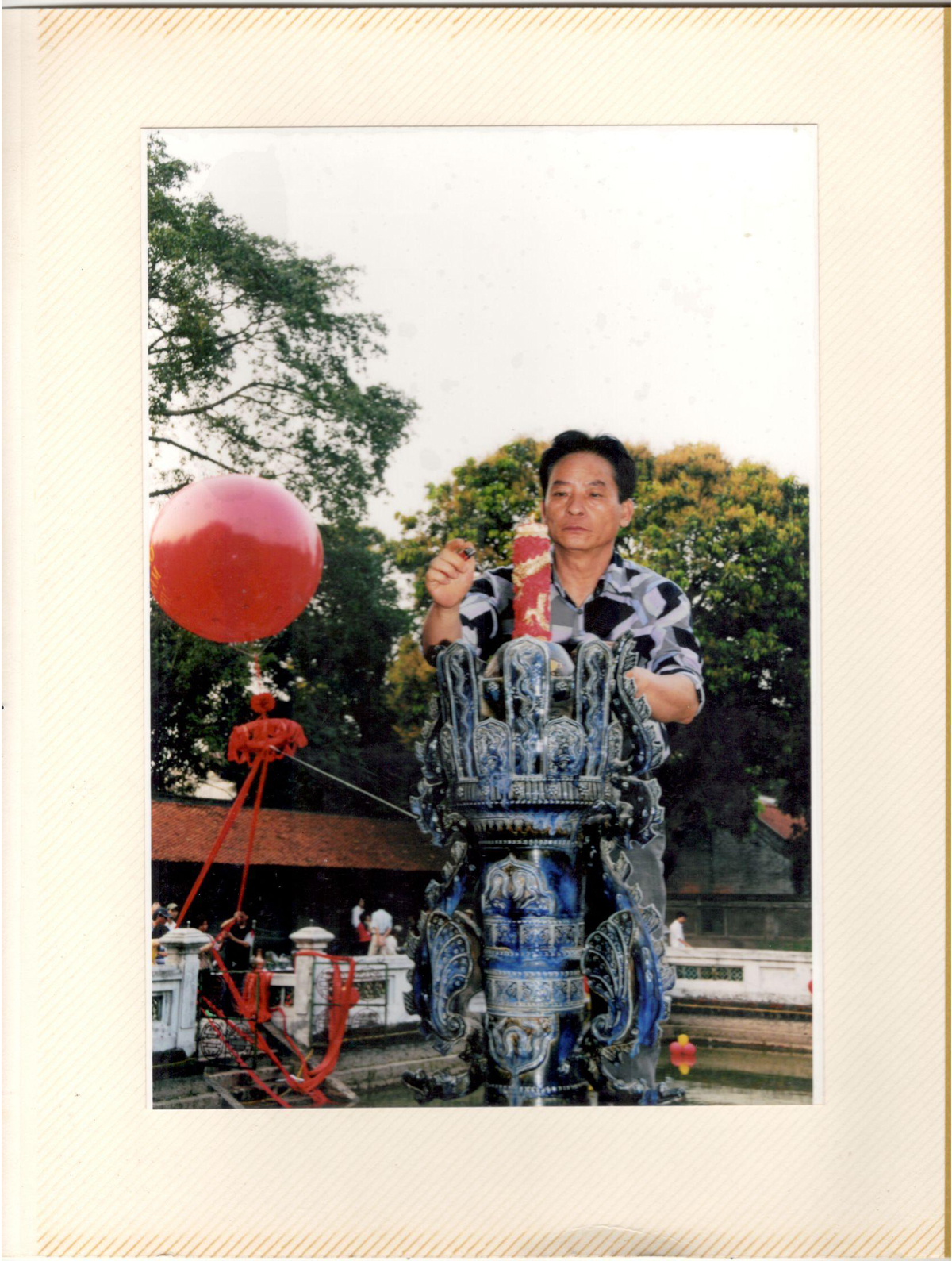

Until then, people came to Bat Trang to shop for all kinds of products, from cup sets and rice bowls to jars for fish sauce and pickles. Thang realized that customers’ fondness for such products remained. Still, the demand for higher-quality materials and artwork had increased. Not to mention that collectors of Bat Trang fine art ceramics were growing within Vietnam and internationally.
In the early 2000s, the public began to notice the appearance of fine ceramics featuring traditional dark glazing but decorated with elegant drawings, a perfect blend of traditional and modern art. Vu Duc Thang’s innovative style of combining warm colors with decorative lines and graphics conquered the hearts of many consumers.
A new leaf turned in the life and career of artist Vu Duc Thang and his esteemed collaborator and talented potter Le Hong Hai. His brushing talent helped every piece of pottery reach the full artistic expression that Vu Duc Thang had visualized for it. A new era began in the ceramics industry, one that the pair had been anxiously pursuing for decades. With the advent of synthetically-colored glazed ceramics bringing new unique nuances and complementing the more traditional collections of enamel lines.
Thang’s works often depict traditional decorative motifs such as lotus flowers, ducks, fish, and soft and fresh mosses. However, under the scrutiny of a modern artist, those traditional decorative motifs still hold their contemporary feel.

In 2003, the then 49-years-old Vu Duc Thang was awarded by Hanoi’s People Committee with the title of Elite Artist.

Vu Duc Thang’s beloved brainchildren were born in the first decade of the new century. Stored within Bat Trang’s Ancient House, they look like they have absorbed the sacred and mysterious soul of the thousand-year-old craft village. In that thick and shining layers of glazing, the alluvial grains from the Mother River can’t be seen, but they can be felt nevertheless.
This poem was written by painter Dang Suong, one of Vu Duc Thang’s classmates from Hanoi’s College of Industrial Fine Arts.
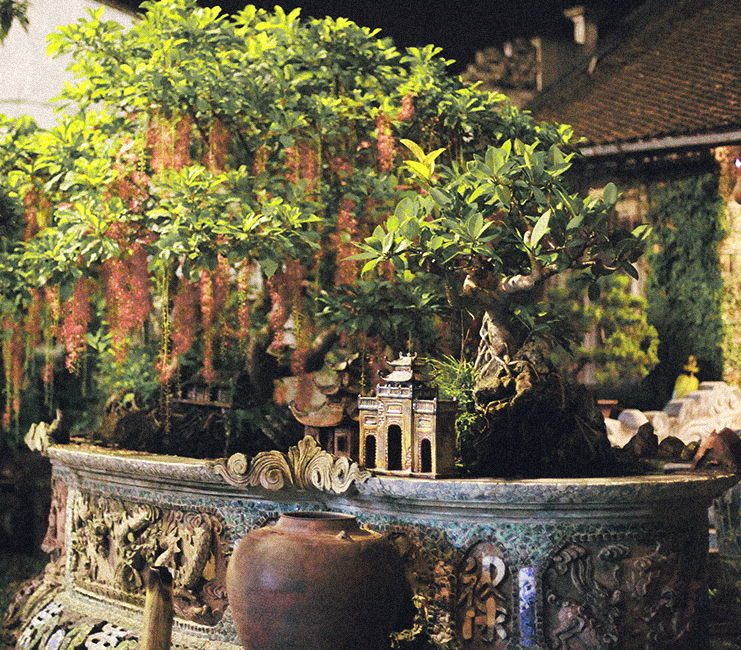

The stall displaying Hồn Đất Việt (Soul of Vietnam) creations is just one of the many at Bat Trang pottery market. However, it stands out for its ceramics glazed with colors and styles never found before in any other Bat Trang ceramics collections.
The Ancient Communal House of Bat Trang Village was established during the Le Dynasty when potters from the Ninh Binh and Thanh Hoa provinces migrated to the Red River. The land was rich in vegetation, minerals, and metals. The people who migrated here converged to form four famous craft villages:
One of the projects consists in creating a set of large-sized ceramic works to celebrate the Great Festival by recreating the heroic 4,000-year-long history of the nation.
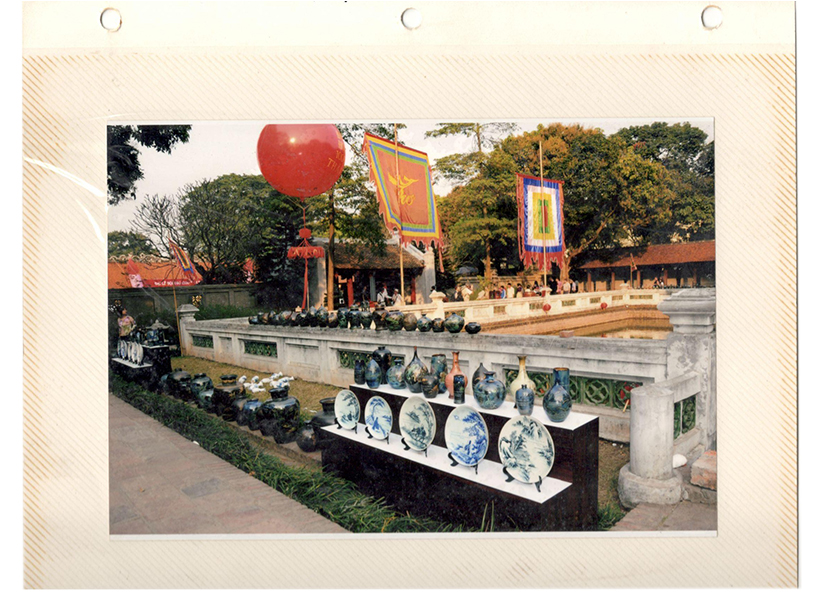
One of the most iconic pieces is ‘Hai Ba Trung riding an elephant to battle’—the image of the first two heroic queens in the history of the South is represented by the author’s simple but strong brown enamel. Another remarkable work, the ‘Chief moving the capital’ (co-authored with calligrapher Tran Duc Canh and mosaic artist Nguyen Duc Biet), honors King Ly Thai To. The piece depicts the wise man, who had merit in establishing the Ly dynasty and Thang Long citadel on the sacred land of dragons. The set of ceramic figurines’ Occasion Arhat’ shows the spirit of honoring the Buddhadharma of the Ly dynasty with the thought of serving the fatherland and nation, promoting love in the community.

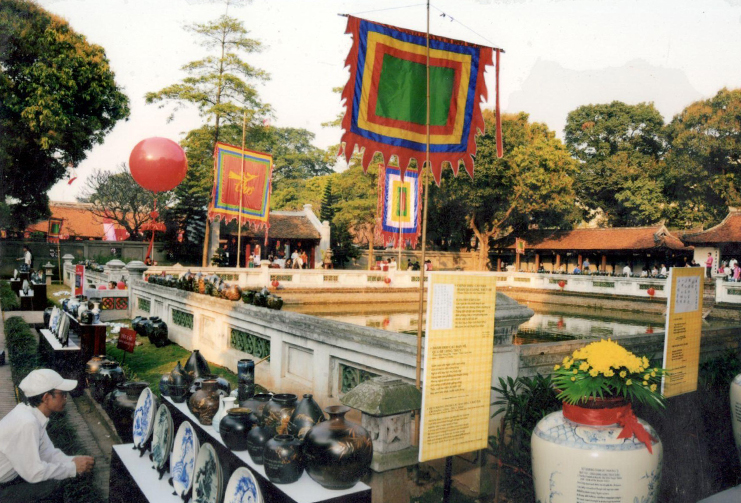
The Hanoi Handicraft Exhibition celebrated the millennial anniversary of Thang Long Hanoi. It opened at the Friendship Cultural Palace in August 2010. The products and artworks of Bat Trang pottery village are here showcased and include an impressive set by Vu Duc Thang. These collections have attracted many visitors, charming them with their elegant forms and dark enamel colors. After the exhibition, visitors returned to the Vu Duc Thang’s store in Bat Trang to purchase a piece of the ‘Soul of Vietnam.’Three simple words yet they perfectly encapsulate Vu Duc Thang’s creative spirit throughout his lifetime and artistic career.
Hanoi Specialist Studies
VŨ THỊ TUYẾT NHUNG